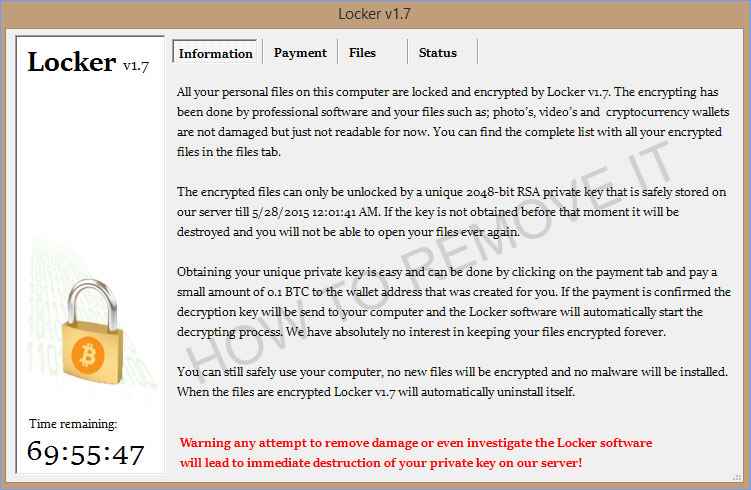
This article describes tips to follow to be protected against this malware.
Cryptolocker Ransomware holds files hostage for cash (Sep 19, 2013). Cryptowall Ransomware uses Bitcoin and TOR exclusively (June 27, 2014). CryptoWall 3.0: Ransomware returns with I2P Network. Cryptowall 4.0 emerges with new features (Nov 6, 2015). 10817 I2P - HTTP Proxy Access 3 įor more information on the workings of this malware, you can refer to the following SonicAlerts:. 7 Encrypted Key Exchange - UDP Random Encryption(UltraSurf). 5 Encrypted Key Exchange - Random Encryption (Skype,UltraSurf,Emule). SonicWall Application Control can prevent I2P tunnels on your network via the following signatures: IPS: Cryptolocker Infection Activity 3 - SID 9737 IPS: Cryptolocker Infection Activity 2 - SID 9728 IPS: Cryptolocker Infection Activity 1 - SID 7559 IPS: Adobe Flash Player Integer Overflow 2 - SID 5671 SonicWall Gateway Anti-Virus and SonicWall IPS provide protection against this threat via the following signatures: It is similar to CryptoLocker and CryptoWall and uses TOR to fetch the encryption keys. Update: A new variant of the above ransomwares is CryptoWall 3.0. The below resolution is for customers using SonicOS 6.5 firmware. This release includes significant user interface changes and many new features that are different from the SonicOS 6.2 and earlier firmware. Infection usually takes place when a user clicks on an executable file attached to a spam email. Thereafter, the malware will display a message demanding payment to decrypt the files. 
Once a computer is infected, the malware encrypts certain files stored on the computer.
Copy URL The link has been copied to clipboardĬryptoWall and CryptoLocker are ransomwares which infect a computer usually via email.






